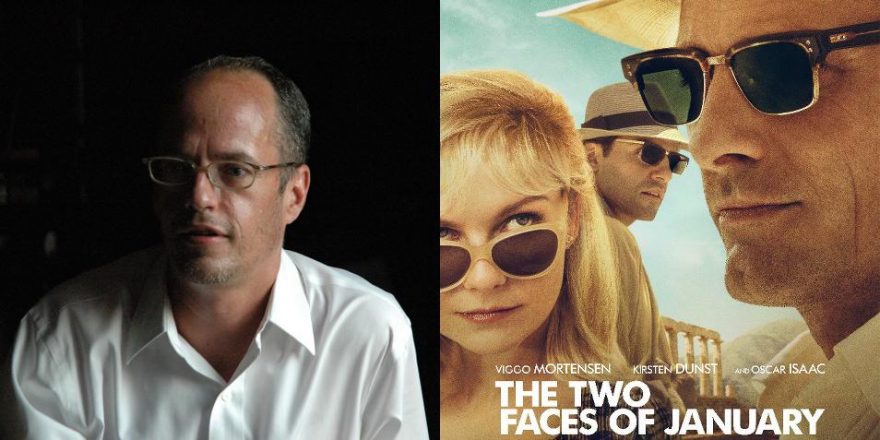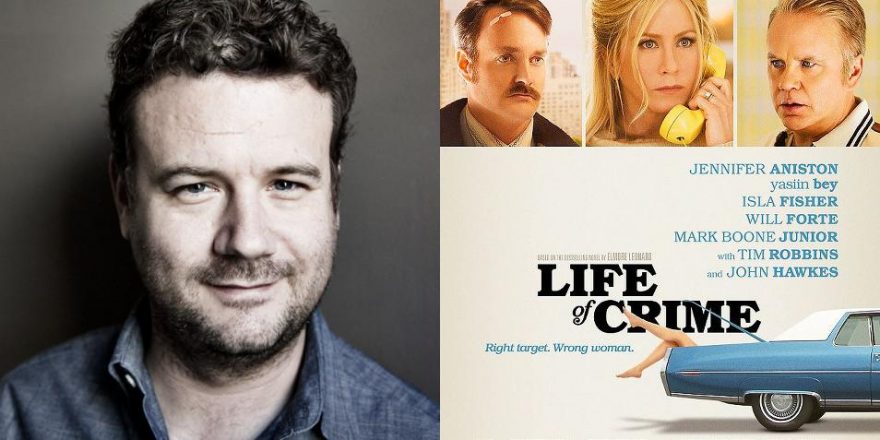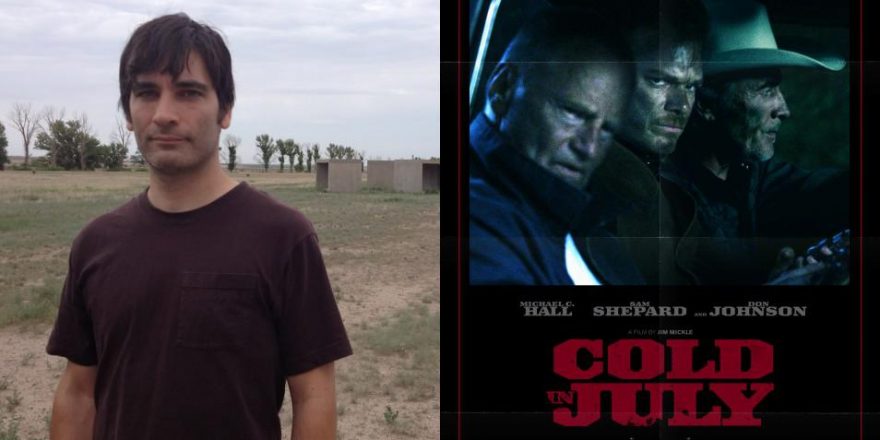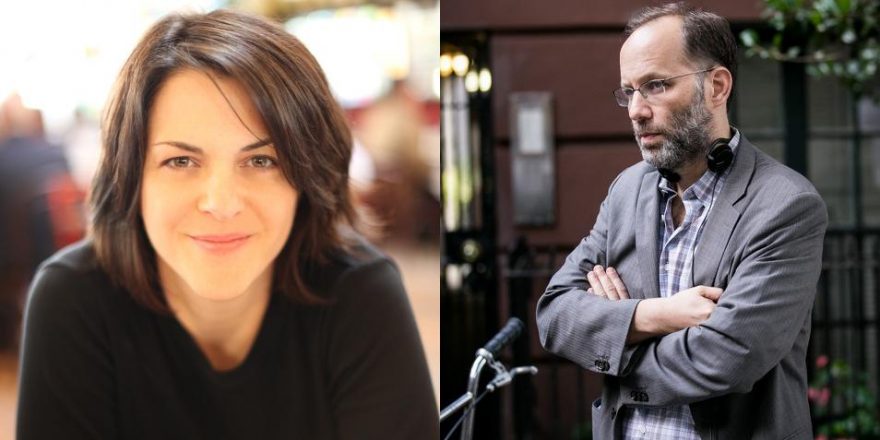Few writers hypnotize with the electrifying finesse of Patricia Highsmith. Her career spanned 22 novels and dozens of short stories. In brisk, spare prose coiled with tension, she lures the reader into the unsettled minds of her protagonists. Before you know it, you’re neck-deep in guilt, mesmerized, drawn beat by quiet beat into their dark hearts. Graham Greene famously called her “the poet of apprehension.”
When I first read The Talented Mr. Ripley some time in the 1980s, I was staying in a London hotel for several weeks. At 2 a.m., jet-lagged, I started reading the book to help my mind unwind. Quite the opposite occurred. At first light, I sought out a bookseller stocking the next novel, Ripley Under Ground. It took until midday to locate the right shop. Like a junkie, I holed up with this heavy paperback that combined all five Ripley novels until I’d devoured them all. I still have that book, cover worn away, its tiny typography now a strain on my middle-aged eyes.
Usually unfolding in the present tense, with our experience of events confined to her protagonists’ point of view, Highsmith’s stories remain a natural magnet for filmmakers. Apparently Highsmith approved of Robert Walker’s insinuating performance in Hitchcock’s Strangers On A Train and admired Alain Delon in René Clement’s sun-drenched Plein Soleil. Of the many screen adaptations of her work, my favorites include these two as well as Wim Wenders’ The American Friend, Claude Chabrol’s The Cry of the Owl, Anthony Minghella’s The Talented Mr. Ripley and Liliana Cavani’s underrated Ripley’s Game.
A fresh wave of new Highsmith adaptations is on its way, led by screenwriter Hossein Amini’s (Drive, The Wings of The Dove, Jude) directorial debut, The Two Faces of January, based on Highsmith’s 1964 novel. Todd Haynes is in post-production on Carol, starring Cate Blanchett and Rooney Mara, adapted from Highsmith’s 1952 lesbian romance, which was originally published under a pseudonym and offered the rare audacity of a happy ending for its gay characters. Adaptions of The Blunderer, Deep Water and This Sweet Sickness have also been announced.
Her work masquerades as pulp crime fiction, but Highsmith is actually, as Gore Vidal noted, “one of our greatest modernist writers.” With a deft psychological touch and a gripping undertow of existentialism, her writing is often more reminiscent of Dostoyevsky, Camus, Gide and, surprisingly, Henry James. She conjures the mysterious tether between mind and body, the way our bodies often process emotions a quicksilver moment or two before our minds. Her characters discover tiny shifts of feeling through the lurching rhythms of the flesh.
Consider her description of Rydal Keener, one of the protagonists of The Two Faces of January as he guiltily faces a policeman at passport control:
“The gendarme stared at him, frowning. Then he glanced at his clothes, at his new shoes, back at his face. In that instant, Rydal felt his guard collapse. His left eye twitched. His mouth had become hard, unsmiling, defiant. Shame, guilt had annihilated him. For one flashing second, Rydal thought of the moment in his father’s study, when his father had accused him of violence against Agnes. Then an instant later, it had passed, Rydal could smile lightly again, though his forehead was cool with sweat.”
This moment in Amini’s film comes closest to capturing the taut, vulnerable subjectivity of the book (though Amini also tweaks Highsmith, adding an unnecessary thematic flourish in Chester’s fake-paternal rescue of Rydal). Adapting Highsmith is clearly a tough juggling act, as she often uses details of behavior to hint, iceberg-like, at the vast subterranean psychology that lurks below.
The Two Faces of January, like many of Highsmith’s narratives, tells a symbiotically charged tale of two strangers who find themselves tangled in a death dance. Con artist Chester MacFarland (Viggo Mortensen) and his wife, Colette (Kirsten Dunst), vacation in 1962 Greece, swanning around the Parthenon in elegant wrinkled linen. They draw the eye of American tour guide Rydal Keener (Oscar Isaac), who skims money from his unsuspecting clients while educating them about classical architecture and mythology.
They’re quickly drawn into a triangle charged with erotic and Oedipal undertones; Chester strongly resembles Rydal’s recently deceased father. In the novel, there’s an added incestuous twinge in the attraction between Colette and Rydal because she also resembles his cousin, Agnes. As overwrought and absurd as these sentences seem as I type them, Highsmith somehow, miraculously, pulls it off. Beat by tiny beat. Though Highsmith’s posthumous reputation has steadily risen, in her lifetime her work was often seen as too harsh and inhuman for mid-century audiences. One publisher rejected this novel, saying, “A story can handle two neurotic characters, but not three.”
Soon after their first meeting, Rydal helps Chester dispose of the body of an investigator whom, moments earlier, Chester has killed to escape the tightening noose. In the novel, Highsmith adopts a dual-protagonist approach. Chapters alternate in perspective; we begin with Chester and switch to Rydal, and back and forth again. These temporal and point-of-view ellipses keep the narrative rolling forward and, with her sly, shifting perspective, Highsmith manages to make the motives of her characters both elusive and believable.
A book, of course, can create tension between a character’s placid exterior and their roiling interior monologue. And when Amini focuses closely on his excellent actors and lets us experience the rising tide of their panicked thoughts, his movie is gripping. All three leads give appealing performances, though Dunst’s role, sadly, is underdeveloped and as a result the attraction between Colette and Rydal never really ignites.
The movie has a gorgeous yellow and ochre palette and its cinematography, production and costume design seductively convey the deadened, lovely leisure world of these trapped tourists. But to my mind, Amini doesn’t fully unleash the rage and violence simmering beneath these contained surfaces. This ruthless collision between elegance and violence — often tinged with a whiff of homoeroticism — is at the core of Highsmith’s work.
Highsmith led a notoriously isolated life, preferring the company of her pets — including snails — to that of people. And in her later years she was an unhinged anti-Semite, writing pseudonymous letters to newspapers complaining of Jewish influence. And yet this enormously complicated human being — a lesbian who spared her female characters nothing, an American author writing about Americans while mostly living in Europe — wrote brilliant, spellbinding fiction.
The end of the book is darker than the movie; Chester is stripped, naked under his overcoat, all his money gone, woken by mocking gendarmes on the cobbled streets of Marseilles. But despite Amini’s softening of the plot, Viggo Mortensen’s compelling alcoholic descent captures Chester’s pitch-black heart. His performance has an exciting physicality and the weight of the years on his face and body frighteningly channel Highsmith’s acute description of Chester’s last moments:
“He swayed on his bare feet, as if the pain in his head were pulling him this way and that with its weight.”
And finally:
“When he lifted his face, some of the blanket lifted with it, stuck with blood. Chester touched his nose, and, frightened by what he felt, took his fingers away.”






